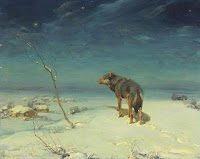Salve,
well, from the northern Europe of the Bronze Age lets jump to Anno Domini 1492, as today is
Columbus Day/
Fiesta Nacional de Espana / el Dia de la Raza etc, thus another anniversary of the beginning of our modern Americas.
Incidentally, on this day we, the horse people, celebrate or should celebrate the return of equus caballus to the Americas - obviously the date is general, as the horses did not arrive AD 1492, but begun arriving with the Colon's (Columbus) second voyage of conquest and settlement and so on, in la Hispanola(1493), Cuba(1494) and later continuing onto the mainland with the entradas.
I want to signal the new thread in my blogging - that is the Age of La Conquista (Conquest), Colonial Spanish empire and the horse in the Americas.
Slowly, probably very slowly but surely, for I really enjoy studying this period of the horse history.
We are blessed with abundant primary sources for this period, and later secondary works, and nowadays in the Age of Internet many previously inaccessible article and books can be read directly in one's computer.
I hope to corral for us all some interesting equestrian histories and art, including some of my own.
....so, to begin with this thread, I would like to bring to your attention the person of a conquistador, cavalryman and later a lay priest
Juan de Castellanos who wrote and later published his epic and very long poem -
Elegias de varones ilustres de Indias,; in there de Castellanos put the following verses as allegedly spoken by some conquistador companions during la entrada of
Gonzalo Jimenez de Quesada and the conquest of Nueva Granada (Colombia), crude words spoken upon a desperate victory over some brave native warriors in or near the valley of Opon:
[fragment can be easily translated via google translate]
Tierra buena, tierra buena,
Tierra que hara fin a nuestra pena.
Tierra de oro, tierra bastecida
Tierra para hacer perpetua casa.
Tierra con abundacia de comida,
Tierra de grandes pueblos, tierra rasa,
Tierra donde se ve gente vestida
Tierra de bendicion, clara y serena,
Tierra que hara fin a nuestra pena.
[1857 edition, p. 309-10, can be read or downloaded from
archive.org]
 |
| Monument to Pizarro and his horse in Lima, Peru |
For the victorious Spanish conquistadors the conquered land would be the land of prosperity and wealth, and so would the Americas prove themselves to be the greatest land for the horses.
But first the horses would replenish and grow abundant in the Caribbean pastures, before really making for the continent with the conquistadors. we could say that the American horses were born in the Caribbean in the early XVI century.
ps
I have been watching the Spanish Kingdom (Spain) troubled internal conflicts taking place in their autonomous regions, especially in Catalonia (but Pais Vasco is not far behind nor is Galicia etc).































